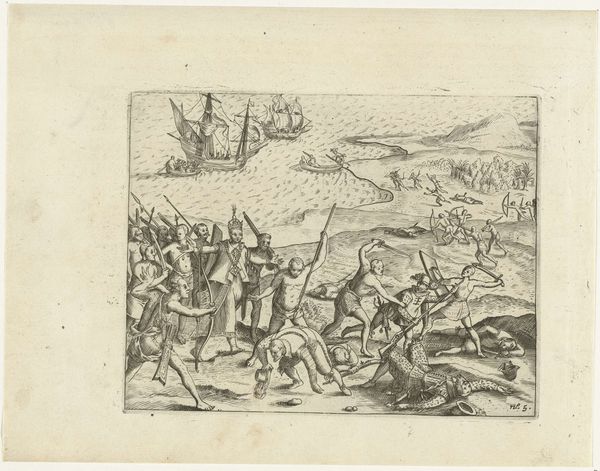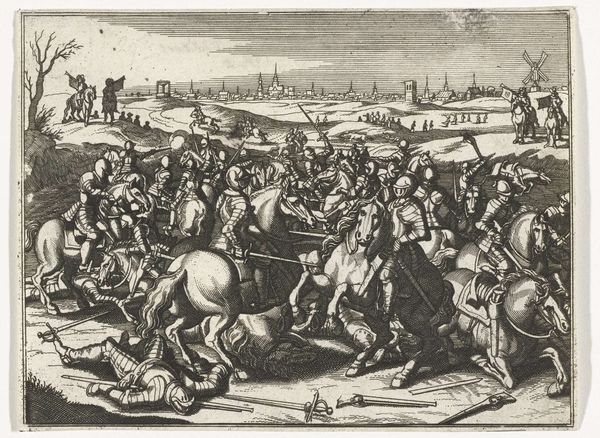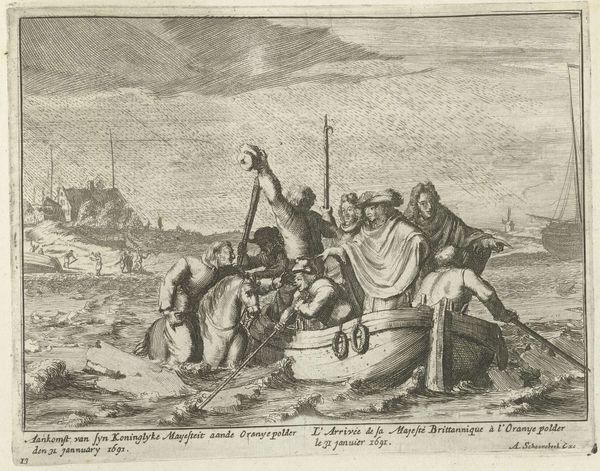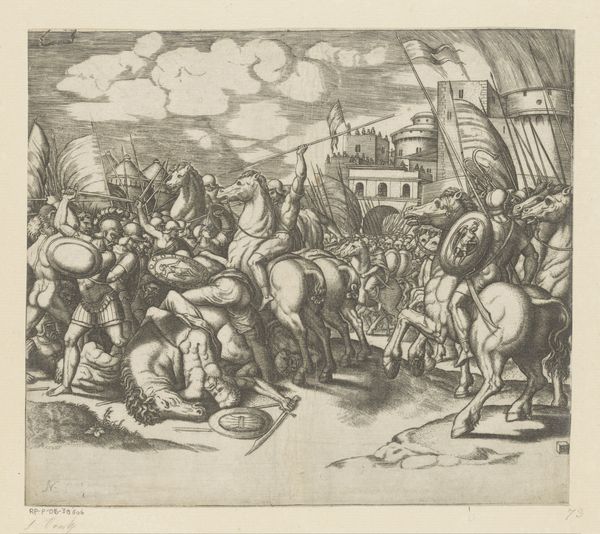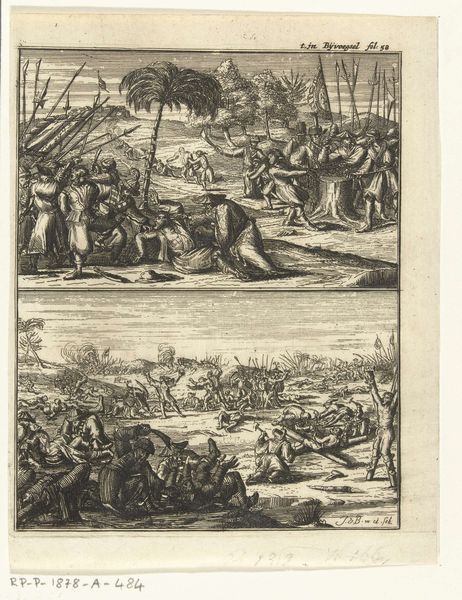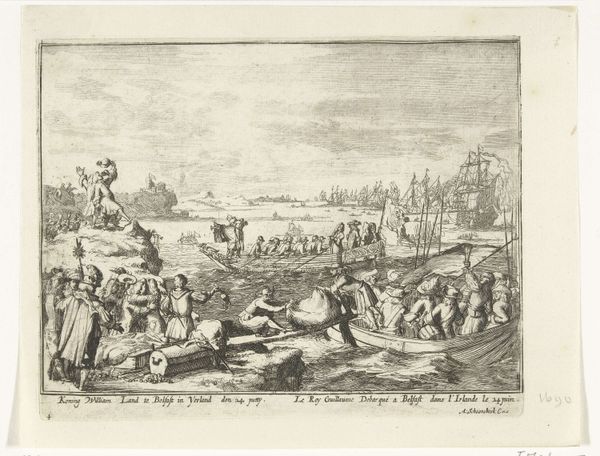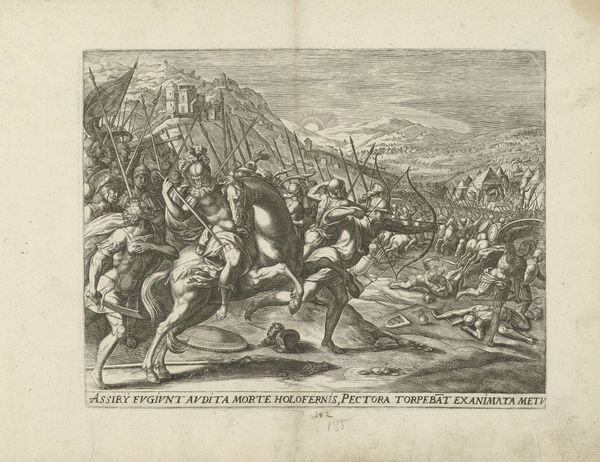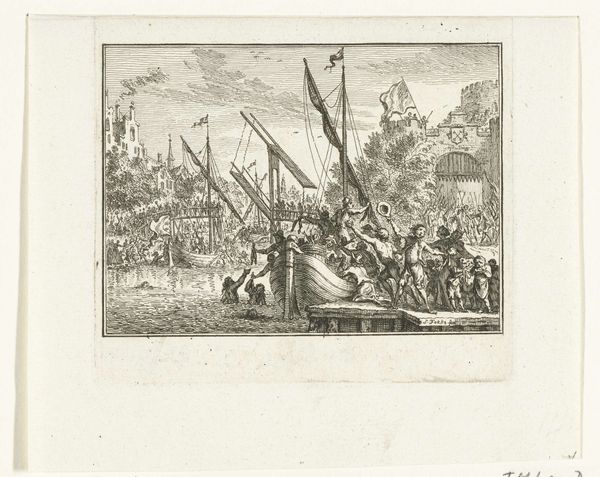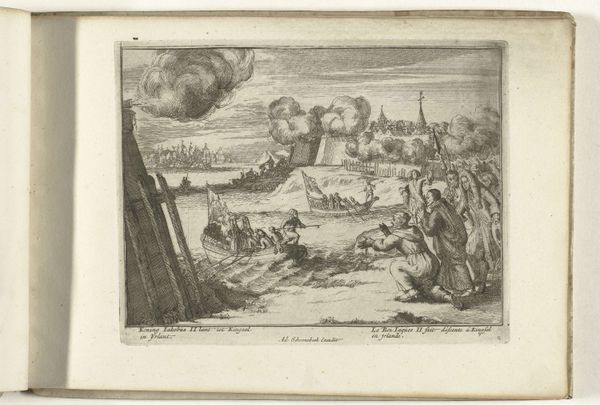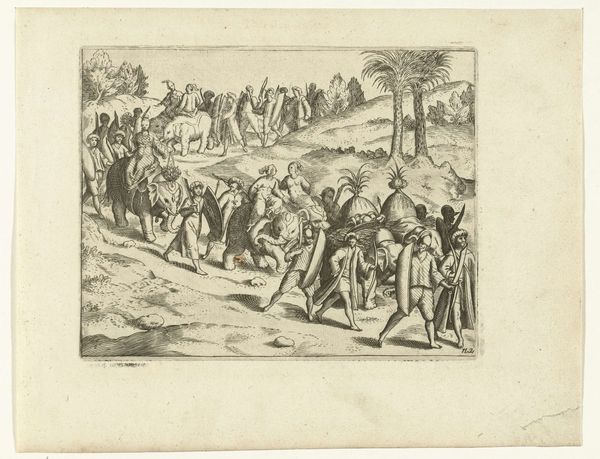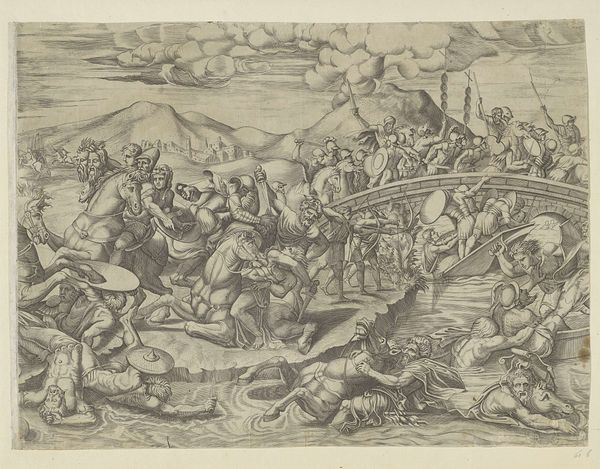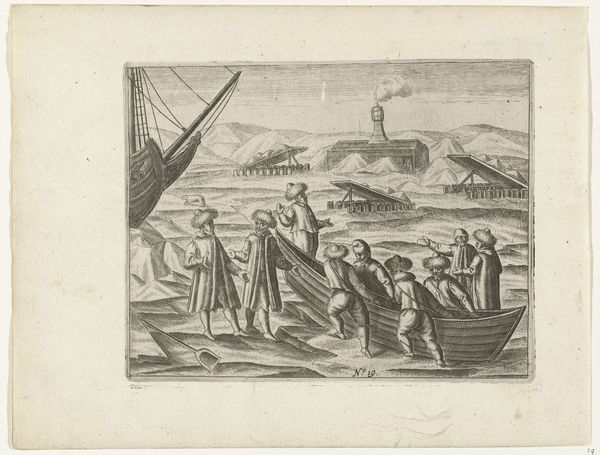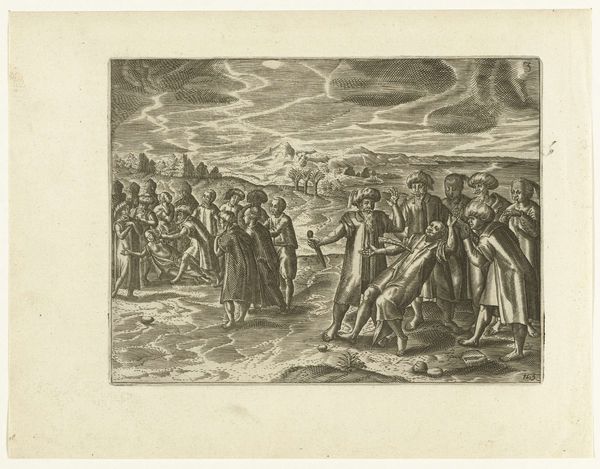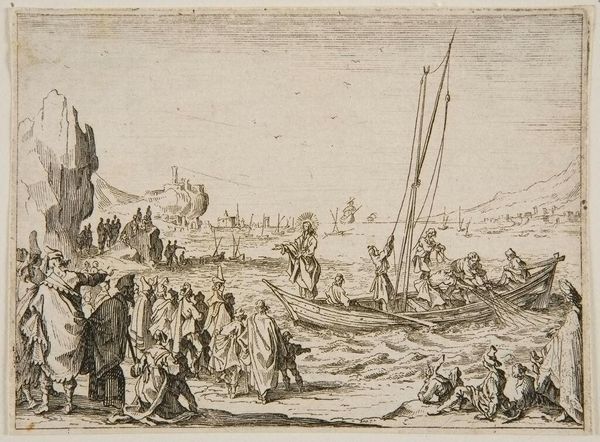
#
pen sketch
#
pencil sketch
#
old engraving style
#
personal sketchbook
#
ink drawing experimentation
#
pen-ink sketch
#
pen work
#
sketchbook drawing
#
storyboard and sketchbook work
#
sketchbook art
Dimensions: height 135 mm, width 170 mm
Copyright: Rijks Museum: Open Domain
Curator: This engaging image is titled "De Weert ontvangen door de koning van Maticalo, 1603," made between 1644 and 1646. It currently resides in the collection of the Rijksmuseum. Editor: The immediate impression I get is of an almost theatrical staging. It has a crispness and clarity of line that conveys movement and a meeting between very different worlds, a clash of civilizations if you like. Curator: Precisely! This pen and ink sketch captures a moment of cultural exchange and initial contact. We see De Weert, the Dutch explorer, being received by the King of Maticalo, on what is now Sri Lankan soil, marking the beginnings of Dutch involvement in the region. The historical narrative is presented very deliberately here. Editor: Yes, but the perspective feels decidedly colonial. The ships in the background are strategically placed, representing power projection, the imposing presence of the Dutch East India Company. The way the King is being depicted also seems less about authentic representation and more about solidifying a perceived power imbalance. Curator: Absolutely. While the technique feels almost documentary, reflecting a desire for accuracy and record-keeping that fits the 17th-century mindset, we cannot separate it from the underlying currents of power, commerce, and control. Consider also who likely commissioned or purchased works of this kind. Editor: Right. This artwork isn't just about an encounter; it’s about framing that encounter, constructing a specific visual language to legitimize colonial endeavors. What story is emphasized, and who gets to tell it? Look at the postures, the clothing; they convey certain assumptions and justifications for foreign intervention. Curator: Examining these historical visual narratives allows us to trace the lineage of colonialism’s impact. What we see—the gestures, the arrangements of figures, and the composition as a whole—contributes to a constructed understanding of this contact. Editor: It's about understanding the narratives behind the imagery and questioning whose voices were centered, and at what cost to others. It leaves me thinking about the responsibility art carries in both reflecting and shaping the historical narrative, a burden this image undoubtedly shoulders.
Comments
No comments
Be the first to comment and join the conversation on the ultimate creative platform.
